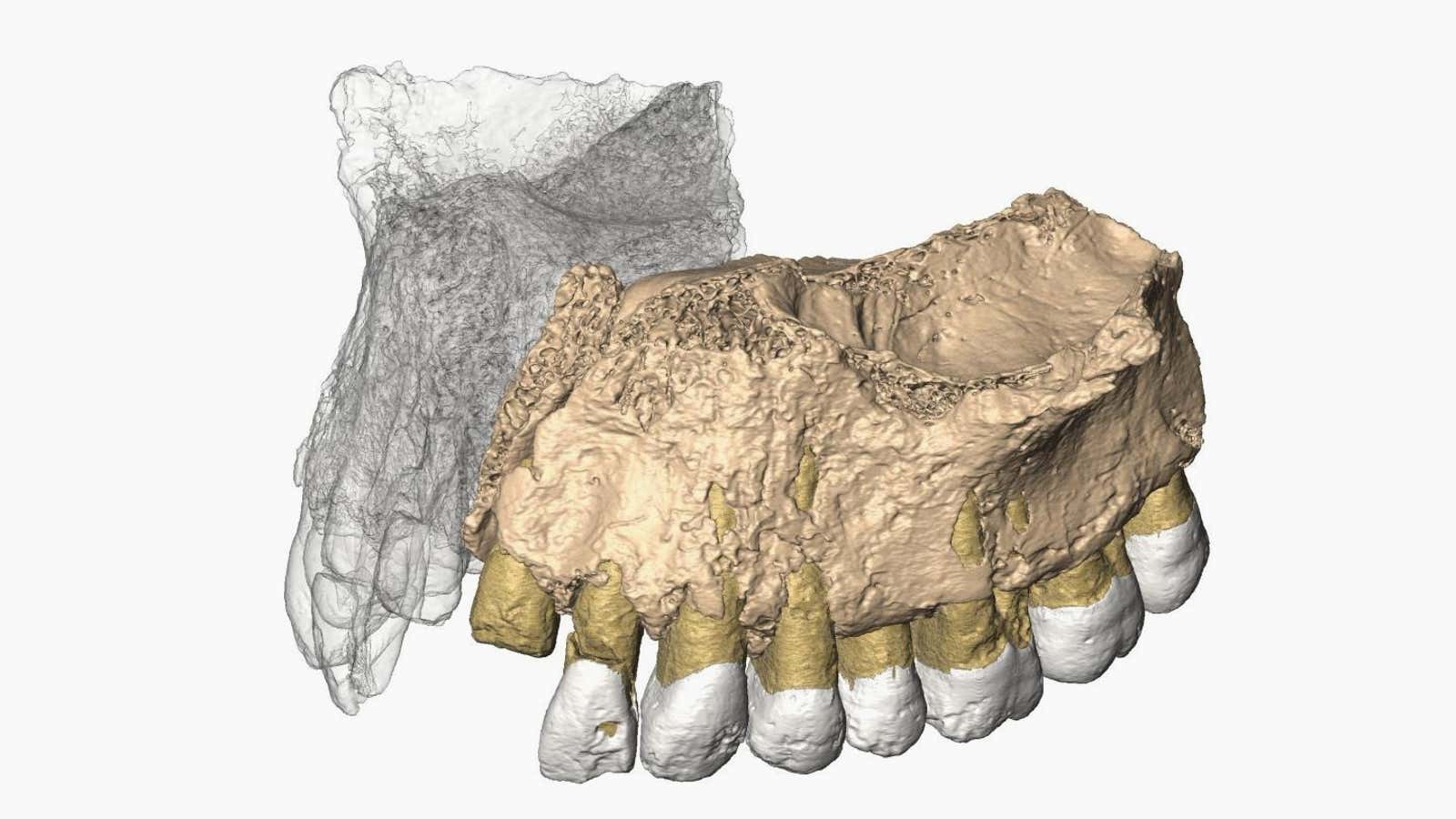The human story keeps changing. Scientists once believed that Homo sapiens evolved in Africa 200,000 years ago and started migrating from the continent about 80,000 years afterward in the Late Pleistocene era. But last year archaeologists revealed that a fossil in Morocco shows our ancestors were around at least 300,000 years ago. Now, archaeologists in Israel have found more evidence that human history’s not set in stone—more like pencil and paper.
An ancient jawbone and human-made tools found in Misliya, a collapsed cave on Mount Carmel in Israel in 2002, are the subject of a study in the journal Science (paywall) on Jan. 25. The upper jawbone, containing a half-row of teeth, was dated using several different techniques and then artificially reconstructed. The work puts our ancestors’ initial trek out of Africa even earlier in human history, pushing it back by more than 40,000 years, according to an international team of researchers. The fossil dates to roughly 170,000-190,000 years ago, which also suggest the original Homo sapiens may have been around longer than previously thought.
“The entire narrative of the evolution of Homo sapiens must be pushed back by at least 100,000-200,000 years,” says lead researcher anthropologist Israel Hershkovitz of Tel Aviv University in a statement on the study. “If modern humans started traveling out of Africa some 200,000 years ago, it follows that they must have originated in Africa at least 300,000-500,000 years ago.”
The ancient jawbone also helps contextualize some other recent finds. “About a year ago, scientists reported finding the remains of modern humans in China dating to about 80,000-100,000 years ago,” Hershkovitz explains. “This suggested that their migration occurred earlier than previously thought, but until our discovery at Misliya, we could not explain it.” The jawbone represents an interim step in the migration from Africa to Asia and fits in a more expansive timeline of human evolution that scientists are starting to adopt as the true historical record.
The researchers believe the Misliya jawbone is from a Homo sapien because its teeth resemble those in the skulls of modern humans found at other sites. Also, alongside it, archeologists found tools made of flint, crafted with a sophisticated “Levallois technique,” whereby a smoothly shaped edge is obtained by flaking away at a flint in bits. This method requires abstract thinking, and is believed to have been invented by Homo sapiens.
Three teams of researchers dated the finds, both fossil and tools, using various techniques, like measuring uranium isotope decay and exposure to light. The flint tools are believed to be 120,000-170,000 years old. A sliver of enamel from a tooth in the jawbone was dated to about 175-200,000 years ago.
The jawbone and tools were found together, which strongly suggests that the owner also wielded the nearby tools. If that’s true, says Mina Weinstein-Evron, study co-author and archaeologist at Haifa University, then the inhabitants of the Misliya cave were likely large-game hunters, living off deer and gazelles, who cooked their hunt over fire.
